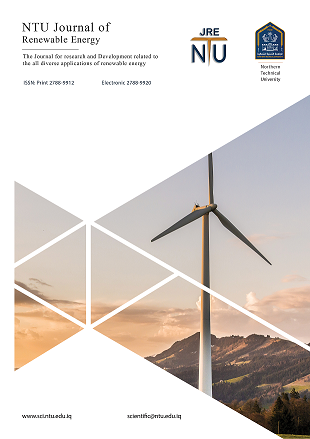Comparison of Heat Sinks with Different Perforations Number
DOI:
https://doi.org/10.56286/ntujre.v5i1.686Keywords:
Heat sink, Perforated fins, forced convection, perforation distanceAbstract
In this paper, the influence of perforation number Np is experimentally studied (or in the other word, the effect of perforation space Ps on the heat sink performance). Three types of rectangular heat sinks were investigated; two types have been perforated by lateral holes (4 mm the hole diameter) distributed on two rows in the fin. First one has 12 holes in a fin (its Ps is 14.3mm) called (PHS-12p). Second heat sink has 8 holes in a single fin (its Ps is 20mm) called (PHS-8p). These two perforated types compared with the third heat sink, which has no perforation (solid heat sink). The comparison was investigated, presented and discussed. The experiment was conducted by forced convection device. The obtained results showed that dissipated heat, Nusslet number, and convective heat transfer coefficient were increased by using perforations compared with non-perforated heat sink. The use of more perforations has a positive effect on heat dissipation. The enhancement in heat transfer was 6.57% for PHS-12P, while PHS_8P improved by 1.75% only at Re 20000. Moreover, the heat sink weight decreases with the use perforated heat sink compared with the solid heat sink.
Downloads
Published
Issue
Section
License
Copyright (c) 2023 NTU Journal of Renewable Energy

This work is licensed under a Creative Commons Attribution 4.0 International License.








